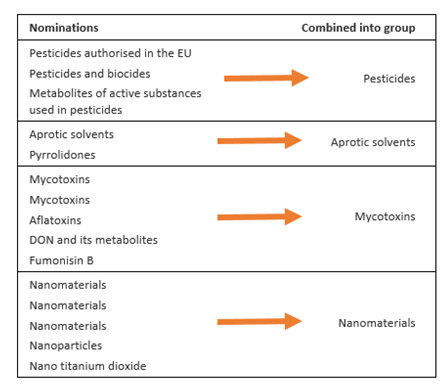We received 132 responses to the online survey for the nomination of substances for research under HBM4EU.
In terms of who responded, we received responses from 24 National Hubs, four members of the Stakeholder Forum and six members of the EU Policy Board.
The use of an online survey tool meant that the results could be downloaded as individual completed surveys, as well as automatically collated into an excel file containing the full survey results for all participants. A full list of all nominated substances organized according to which actor nominated which substance or substance group is available here.
The next step was to separate out re-nominations of substances on the 1st list of HBM4EU Priority Substances, of which there were 40. Click here to download a list of the re-nominations of substances on the 1st list. The knowledge needs, research proposals and evidence in these survey responses were channelled to the Chemical Substance Group Leaders for inclusion in the Scoping Documents for the substances on the 1st list.
We then consolidated the 92 nominations for new substances by substance and substance groups, to produce a long list of nominated substances. This entailed looking for overlap across nominations. For single substances, we chose to include both a single substance and compounds associated with a single substance. Thus, we combined “mercury” with “mercury and its compounds”.
For substance groups, we consolidated some single substances and smaller groups into large groups. Table 1 provides an overview of nominations for single substances and smaller groups that we consolidated into groups when producing the long list.
Table 1: Nominations that were consolidated into larger groups to produce the long list

The long list is available for download here and includes 48 new substances and substance groups.
Disclaimer
The HBM4EU project was launched in 2016 with the aim of improving the collective understanding of human exposure to hazardous chemicals and developing HBM as an exposure assessment method. The project had €74m in funding and jointly implemented by 120 partners from 28 participating countries – 24 EU member states plus Norway, Switzerland, Iceland and Israel and the European Environment Agency. One of its aims was to ensure the sustainability of HBM in the EU beyond 2021. The project ended in June 2022. The website will not be updated any longer, except the page on peer reviewed publications, but will be online until 2032.


